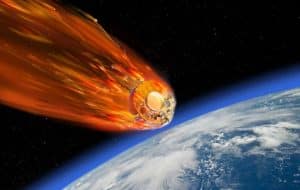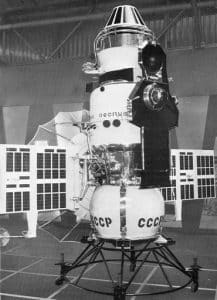It’s not just asteroids we need to watch out for—an old Soviet satellite is expected to reenter Earth’s atmosphere next week, and there’s a slim chance it could survive the descent and hit the ground.
The satellite, known as Kosmos 482, was launched in March 1972 by the former Soviet Union to study the surface of Venus. But due to a rocket malfunction, it never made it out of Earth’s orbit and has been circling the planet ever since.

Now, more than 50 years later, it’s falling back to Earth.
Experts say reentry could happen sometime between May 7 and May 13, give or take a few days. The spacecraft is about the size of a car and weighs around 1,100 pounds—big enough to make a serious impact if it survives the fiery plunge through our atmosphere.
“There’s a real chance it could make it to the ground,” said Jonathan McDowell, an astronomer at the Harvard-Smithsonian Center for Astrophysics. “In that case, the odds of it hitting someone are about one in several thousand.”
Dutch satellite tracker Marco Langbroek, who flagged the upcoming reentry, explained that Kosmos 482 was built tough—strong enough to survive a descent through Venus’s extreme atmosphere. That durability could help it withstand the burn-up process in Earth’s atmosphere too.
Langbroek estimates the spacecraft could hit the ground—or ocean—at speeds over 145 mph. McDowell compared it to “a car falling out of the sky at 100 to 200 miles per hour.”

The probe was originally equipped with a parachute to slow its descent, but Langbroek isn’t counting on that working after five decades in space. If it does survive reentry, he says, “it would come down hard.”
Even so, both experts stress that the overall risk is low. Most of Earth’s surface is uninhabited, especially the vast oceans. McDowell explained that the odds of this satellite hitting any individual person are incredibly small—about one in 10 billion.
“No need for major concern,” he added, “but you wouldn’t want it bashing you on the head.”

As for where it might land? That’s still a mystery. Langbroek said the impact zone could be anywhere between 52 degrees north and 52 degrees south latitude. That includes much of North and South America, Europe, Asia, Africa, and Australia.
“The most likely scenario,” he said, “is that it falls into the ocean.”
If the satellite does hit land and causes damage—or injures someone—McDowell said international law would hold the Russian government financially responsible.
Kosmos 482 was a backup to Venera 8, a Soviet probe that successfully landed on Venus in July 1972. Venera 8 transmitted data for over 50 minutes before it was destroyed by the planet’s extreme conditions.

